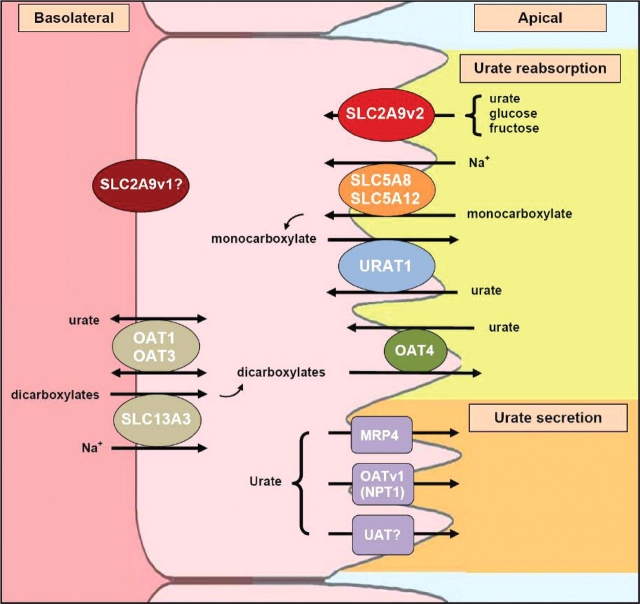Fig. 1.
Urate transport in the proximal tubule. Several transporters have recently been identified as potential molecular components in the renal transport of urate [4,5]. URAT1, a urate-anion exchanger, and OAT4, an organic anion-dicarboxylate exchanger, are mediators of urate reabsorption. URAT1 is considered to be a key player in uric acid homeostasis and has been estimated to be responsible for 50% of urate reabsorption. Its activity, however, is driven by sodium-anion transporters, potentially by SLC5A8 and SLC5A12, which provide the main source of anions needed for URAT1 function. For urate secretion into the lumen, a urate transporter/channel (UAT), a voltage-driven organic anion transporter (OATv1 or NPT1) and an ATP-binding cassette transporter (MRP4) are potential efflux candidates. Although very little is known about the basolateral transport of urate, two anion-dicarboxylate transporters, OAT1 and OAT3, have been shown to have the ability to transport urate, but the direction of the urate transport still needs to be characterized. Furthermore, their activity may be coupled with SLC13A3 that drives the intake of Na+ and dicarboxylates. In addition to all these transporters, SLC2A9 has been discovered to be a candidate protein in the excretion of urate and may play a dominant role in urate reabsorption [12]. The short isoform, SLC2A9v2, localizes exclusively to the apical membrane and has been shown to transport urate. The role of the long isoform, SLC2A9v1, on the uric acid transport remains to be elucidated.

